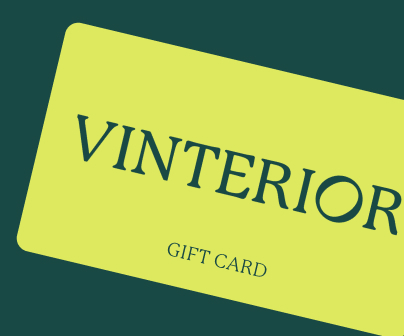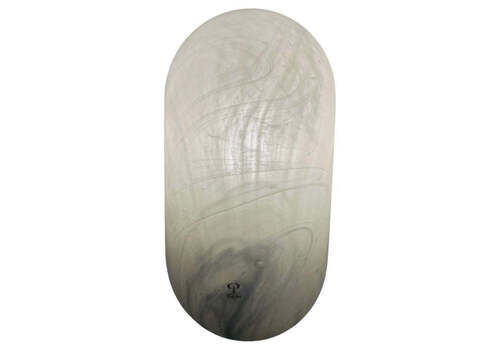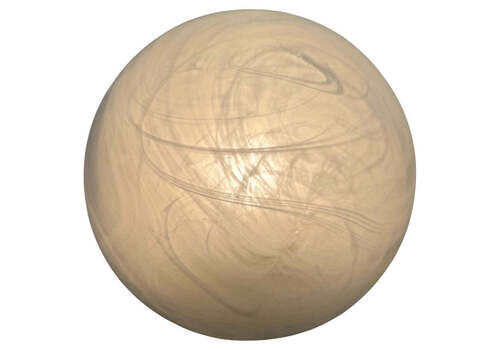Pair Of Neo Greek Pedestals. C.G. Diehl & J.Brandely, France, Circa 1867
£58,568 per set of 2
Shopping at Vinterior
-
14-day return guarantee
-
Outstanding customer service
-
Secure payment
-
Buyer protection
-
Trees planted for every purchase

Item details
Height
141.0 cm
Width
49.0 cm
Depth
49.0 cm
Wear conditions
Good
Wear conditions
Excellent
Shows little to no signs of wear and tear.
Good
May show slight traces of use in keeping with age. Most vintage and antique items fit into this condition.
Average
Likely to show signs of some light scratching and ageing but still remains in a fair condition.
Apparent Wear and Tear
Visible signs of previous use including scratches, chips or stains.
Please refer to condition report, images or make a seller enquiry for additional information.
Description
Exceptional pair of neo-Greek style pedestals, made in blackened pearwood, gilded galvanic bronze and glazed earthenware. The sheath-shaped shaft is decorated with rectangular plates in glazed earthenware with floral decoration and palmettes framed by four female busts ending in a detached sheath. It is surmounted by motifs of palmettes, fans and feline heads in bronze supporting a square entablature framed by a frieze. The pedestals rest on a circular base decorated with a bronze frieze of palmettes, supported by four feet resting on a molded base adorned at the corners with friezes of oves.
Related works :
These ornaments are emblematic of the collaboration between the ornemanist J. Brandely and cabinet-maker C.-G. Diehl, and as found on a « table genre grec », a « bahut style grec » or even a « bijoutier de style grec », presented at the Universal Exhibition of 1867 in Paris, where they were commented by the art critic Jules Mesnard in his book : Les Merveilles de l’Exposition Universelle de 1867 : in particular concerning « les anneaux de l’entablement sont ciselés avec amour et l’on remarquera le dessin des pitons qui les portent ; il en est de même du rayonnement en éventail qui meuble la petite console de côté,… la tête d’un beau type grec, et d’une animation sereine, est coiffée d’une rangée de frisons sur le front. Le diadème est d’une finesse d’ornementation qui, si l’on pouvait le détacher, en ferait un véritable bijou » (tome II, p°133 & 149). (see photos attached)
Biography
Arriving in Paris in about 1840, Charles-Guillaume Diehl (1811-1885) founded his cabinet making and decoration firm at 19 rue Michel-le-Comte in 1885. His workshops produced elegant little pieces of furniture in rosewood and thuja and novelties with bronze and porcelain embellishments (see « Les ébénistes du XIXème siècle », D. Ledoux-Lebard, Ed. de l’amateur, 1982, p.164). It was his luxury boxes, however (liqueur cellarettes, cigar cabinets, games boxes, cashmere cases, jewelry cases) which assured Diehl’s renown (see « l’Art en France sous le Second Empire », Exposition Grand-Palais, Paris, 1979, p.133). Already rewarded with a bronze medal at the Universal Exhibition of 1855 in Paris, he exhibited a jardinière with china columns and a liqueur cabinet at the Industrial Arts Exhibition in 1861.
In collaboration with the designer Jean Brandely (active from 1867 until 1873), Diehl renovated his decorative repertory and created astonishing pieces of furniture in the Grecian style which had a dazzling success at the Universal Exhibition in Paris in 1867, where his cabinets also won a silver medal. Certain motifs were so typical of Diehl’s work that they received extensive commentary by the art critic J. Mesnard in his book « Les Merveilles de l’Exposition Universal de 1867 » (vol. II, pp. 133 & 149). He writes of a table of which « the pendant bearing hooks and the fan shaped radiating motif which ornaments the entablature are engraved with love » (p. 133) and a jewelry case where « The head in fine Grecian style makes up the essential part of the fine gilt bronze ornementation » (p. 149).
For this Universal Exhibition Diehl also formed a partnership with two famous sculptors : Emile Guillemin (1841-1907) who carved the relief for a mahogany sideboard with galvanic gilt bronzes (Orsay Museum, Paris, Inv. O.A.O. 992) and Emmanuel Frémiet (1824-1910) who executed the low relief for a cedar medal cabinet with marquetry and silver plated bronzes (Orsay Museum, Paris, Inv. O.A. 10440). Diehl was again rewarded with a medal of honour at the Union Central Exhibition of 1869 and a progress medal at the Universal Exhibition in Vienna in 1873 (Sideboard in blackened pear wood and lemon wood with galvanic bronzes, designed by J. Brandely with a low relief by E. Guillemin, Orsay Museum, Paris, Inv. O.A.O. 336). Showered with praise by the critics, Diehl is considered as one of the most innovating artists of the 19th Century. His final appearance was at the 1878 Universal Exhibition in Paris where he presented outside the competition, his most recent creations, including a work table in marquetry which with its naturalistic grasshopper motif anticipated « Art Nouveau » (Musée de l’Ecole de Nancy, Nancy).
In order to compete with the English production, the Creil (Oise) and Montereau (Seine-et-Marne) manufactures began producing « English style » white paste earthenware as soon as the eighteenth century. At Montereau, English potters refugees in France shared their skills with Louis Leboeuf (1792-1854). Under the Second Empire, technical innovations, added to the enthusiasm of the middle classes in the decorative arts, provided a production of fine standard, more accomplished and more diverse. The white clay was then relayed by the opaque porcelain, then whiter, harder and tougher. With the merger of Manufactures of Montereau and Creil in 1840, Lebeuf went into partnership with Milliet (marks « Lebeuf Milliet and Co. » from 1840 to 1874, followed by « Lebeuf and Co. » from 1875 to 1876). Both partners were constantly seeking to discover new and various techniques and patterns of decoration. This golden age lasted until the early twentieth century as the economic crisis appeared. A restructuring process was started and Montereau was preferred to Creil. The takeover by the Choisy Manufacture in 1920 continued the mass production until 1955, when Montereau definitely closed down its workshops.
Condition report:
Good. Wear consistent with age and use.
Cancellations
We offer free cancellations and full refund for orders cancelled before dispatching. View full policy.
Returns
We have a 14-day return guarantee for orders from individual sellers, within the UK and European Union. View full policy.
Free collection available
Yes
Similar Columns and Pedestals
Similar Columns and Pedestals
Choose a Wishlist
Create Wishlist
- Ships from PARIS, France
Cancellations and Returns
Last updated: 24th March 2025
We want everybody’s Vinterior experience to be seamless, so both buyers and sellers can fall in love with pre-loved. We designed our Terms of sale to treat everybody fairly.
However, sometimes things don’t go exactly to plan, and you may need to cancel or return an order.
To prevent this, we encourage you to check listings, photos and descriptions carefully before you buy. If you aren’t sure about a piece’s condition, size, provenance or shipping, just ask; click Contact seller to get in touch. Always contact your seller first if you have any queries, at any point in your purchase.
Our buyers receive the same protection when buying from all our sellers, both professional and verified.
Can I cancel an order?
There are many reasons why you might need to cancel an order, and you'll often be entitled to a refund. To cancel an order, click Create cancellation on the order page.
If you cancel your order before it has been dispatched, you will receive a full refund - including delivery costs. However, if your item has been shipped, delivery costs will not be included in your refund.
Please note: orders of bespoke, personalised or made-to-order pieces cannot be cancelled.
Can I return an order?
We understand that sometimes a piece isn’t the perfect fit. So if you no longer want your order, our returns process will ensure it finds a new home fast.
The Vinterior Guarantee included with your purchase entitles you to 14-day returns - allowing you to return any item within 14 days of the delivery date (except in specific circumstances, detailed below).
You can return your order if...
It isn't what you expected
If what arrives isn’t what you ordered, you can open a return. Just send us some photo evidence that the listing was inaccurate, misleading or misrepresented your purchased piece, and you’ll receive a refund.
You change your mind
If you don’t feel a piece is right for your space, you can return it. Once you request a change of mind return, you’ll be responsible for shipping the piece back to your seller as soon as possible. Delivery costs are non-refundable.
It's damaged in transit
In the rare event that an item arrives damaged or defective, you have a full 30 days from the date of delivery to return it for a full refund.
If your purchase arrives broken, always let us know. If Proovia delivered the piece, we can raise an insurance claim on the seller’s behalf. Or, the seller can raise a claim with their chosen courier.
What can't I return?
Just as there are some orders you can’t cancel, there are some you cant return, too. Personalised, bespoke or made-to-order pieces are non-returnable, and non-refundable. Sellers may also reject your return if the item has been altered in any way.
Please note: pieces on our site are pre-loved, not new. They may show some wear and tear; this is not sufficient grounds for a refund, unless the seller has misrepresented the item’s condition.
Lastly, neither Vinterior nor our sellers are liable for any damages or loss sustained in transit via third parties.
I'm eligible for a return. Now what?
To initiate a return, log into your Vinterior account, then go to the relevant order page and click Create a return. In the return request, be sure to include all the details: the reason for your return, an in-depth description, and photos of any issues or damage.
How will I receive my refund?
Once the seller confirms they’ve received the item (in the same condition it was sent), we will send your refund to your original payment method.
All items are inspected on return. If the seller receives the return with damage they don’t recognise, we will not be able to process your refund and the seller may need to send the piece back to you. You will be required to cover these delivery costs.









